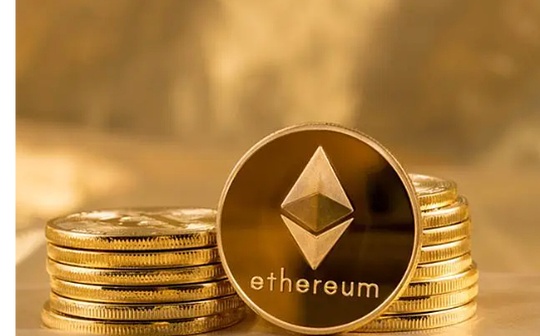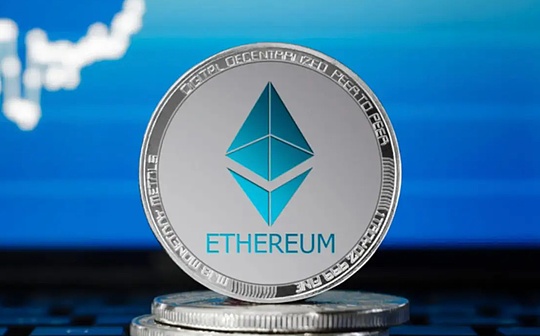
Author: 0xNatalie Source: Chainfeeds
The Ethereum Execution Layer Meeting 195 meeting discussed the proposal to adjust the minimum blob base fee.blob is a data storage type introduced by EIP-4844 in Cancun upgrades to store and process data on Ethereum at a lower cost.The current minimum base fee (MIN_BASE_FEE_PER_BLOB_GAS) is 1 wei.SMG researcher Max Resnick proposed to increase this minimum fee to speed up the adjustment of fees when network congestion is performed.
Increase the basic cost of blobs: Is it an antidote or a poison to quench thirst?
The minimum basic fee is the minimum fee required to process blob data.Ethereum’s Gas structure has changed since the implementation of EIP-1559.In the past, Ethereum’s transaction fees were determined through bidding. The higher the user’s bid, the higher the priority of its transaction being packaged into the block.This mechanism leads to the bidding between users when the network is congested, and transaction fees rise sharply, which is often unpredictable.EIP-1559 divides the Gas fee into two parts: Base Fee and Priority Fee.The basic fee for each transaction will be destroyed and will be automatically adjusted according to the congestion of the network.When the space utilization rate of multiple online transactions is high, the basic fee will increase accordingly, making the transaction fee more predictable, and at the same time, it slows down its inflation rate by destroying some ETH.In addition, users can still incentivize miners to process transactions with tips, but this part of the fee will not be destroyed, but will be paid to miners as rewards.Setting the minimum blob base fee means that even when the network is idle, the cost of processing blob data will not be lower than this minimum.Increasing this minimum will increase the cost of L2 submitting data to the main chain, which will theoretically burn more ETH.
Max proposes to increase the minimum base fee from 1 wei to 160,217,286 wei with the goal of reducing the time it takes to adjust the price to a reasonable level, and he believes that the current blob price grows as it enters price discovery (i.e., determine the appropriate blob Gas price).Too slow, it takes about 160 blocks (about 32 minutes) to reach a reasonable price from zero, resulting in too much time to reach a reasonable fee level when the network starts to get congested.By raising the minimum base fee to a value closer to a reasonable price, the fee can reach the appropriate level faster.This ensures that the Ethereum network can process transactions and blob data more quickly and stably.Max believes that adjusting to 160,217,286 wei will not increase the final price of blob Gas too much, but it can greatly shorten the time for the price to reach equilibrium.
Community perspective
This proposal has caused heated discussions in the community. Ryan Berckmans opposed raising the basic fees of blobs, believing that Ethereum’s current strategy is to attract more users and developers to join the network by providing low-cost and even free data availability (DA) when it is low congestion.Thus accumulating network effects.This strategy is similar to the way of “taking the market first” to gain greater market share and ecosystem value in the future.He believes that increasing fees will increase market barriers and weaken the neutrality of the network, and that the blob market is not yet fully stable, so this adjustment should not be made hastily.
Blockworks team D believes that increasing the minimum fee will not only not help solve Ethereum’s current scaling problem, but will instead weaken Ethereum’s competitiveness in data availability services.He advocates increasing execution fees by expanding L1 and making DA services cheaper to enhance Ethereum’s overall competitiveness and attracting more Rollups to further expand the use and demand of ETH.Foobar, founder of clusters, also holds similar views. He believes that raising fees is too short-sighted, which will damage Ethereum’s credibility and may also lead to the Rollups migration on-board on-chain launch like Celestia, weakening Ethereum’s core value.
Nethermind development contributor Bena Adams is supportive of the proposal.Bena mentioned that although the gap between 1 wei and 1 gwei is very small in terms of economic value, when the Ethereum network is congested, 1 wei is indeed not suitable as the smallest unit.Because although theoretically the cost will increase with congestion, since the minimum unit is 1 wei, the cost growth is too slow to timely reflect the actual congestion of the network, thus unable to play a role in regulating network demand.
Ethereum researcher Potuz pointed out that if this fee is set by a beacon chain (CL) rather than an execution layer (EL), the minimum fee may be directly set to 1 Gwei (i.e. 1 billion wei), and the beacon chain is processing fee.The uint64 data type is used instead of uint256.uint64 has low accuracy when processing decimals, so a very small value like 1 wei is not usually used as the minimum unit of expense.So if the initial fee is set by the beacon chain, there may not be any controversy caused by the smallest fee unit.
Can it really alleviate ETH inflation?
In addition, the view that raising the minimum base fee for blobs also believes that doing so can alleviate the inflationary pressure on ETH.For example, Cygaar of the Abstract team believes that before the implementation of EIP-4844 (March 13, 2024), Rollups are the main source of ETH Gas fees.However, the current price of blobs is almost free for Rollups, and Ethereum has gained little value from the cost of DA in L2.One solution in the short term is to increase the blob base fee, increase combustion and thus reduce the inflationary pressure on ETH.

However, ambient founder Doug Colkitt pointed out that although the usage rate of blob space has reached about 80% in the Ethereum network, these spaces are mainly occupied by low-value spam transactions.These low-value transactions are very sensitive to changes in fees, that is, if the blob fee increases slightly, these low-value transactions will quickly decrease or even disappear.In the end, the combustion rate of ETH will not be significantly increased.
When will ETH start to deflate?
Putting aside the blob, what is the basic cost of the Ethereum block? When will ETH start to deflate?
There is no upper limit on the total supply of ETH. Under the PoS mechanism, the annual issuance of ETH is mainly determined by the number of ETH participating in staking and the overall activity level of the network.As the amount of pledged ETH increases, the issuance will increase accordingly. At the same time, the destruction mechanism introduced by EIP-1559 plays a certain role in offsetting the growth of issuance.After the implementation of EIP-1559, the annual issuance rate is about 0.5-2% (depending on the number of staking ETH and network activity), the average size target value of the block is 15,000,000 Gas, and the average block time of Ethereum is 12.05s.ETH starts deflation when the amount of burning exceeds the annual issuance.
The ETH burning amount of each block is equal to the sum of the base fees for all transactions in the block. The formula is: base fee × block size (calculated at the target value of 15,000,000 Gas).The annual combustion volume is: the ETH combustion volume of each block × the number of blocks produced each year (based on the average block time of 12.05 seconds, it is estimated that there are about 2,620,000 blocks per year).
Assuming that the annual ETH issuance is 1%, calculated based on the current supply of 120,330,000 ETH, it is approximately 1,203,300 ETH.If ETH is to achieve deflation, the annual combustion must be greater than 1,203,300 ETH.Therefore, the following relationship can be derived:
Basic fee × 15,000,000 × 2,620,000 > 1,203,300
It is calculated that the basic fee is approximately30.62 GweiETH can only begin to deflate.Similarly, if the annual issuance of ETH is 0.5%, the basic fee is about 15.31 Gwei to achieve ETH deflation.If the annual issuance of ETH is 2%, the base fee is about 61.23 Gwei to achieve ETH deflation.







